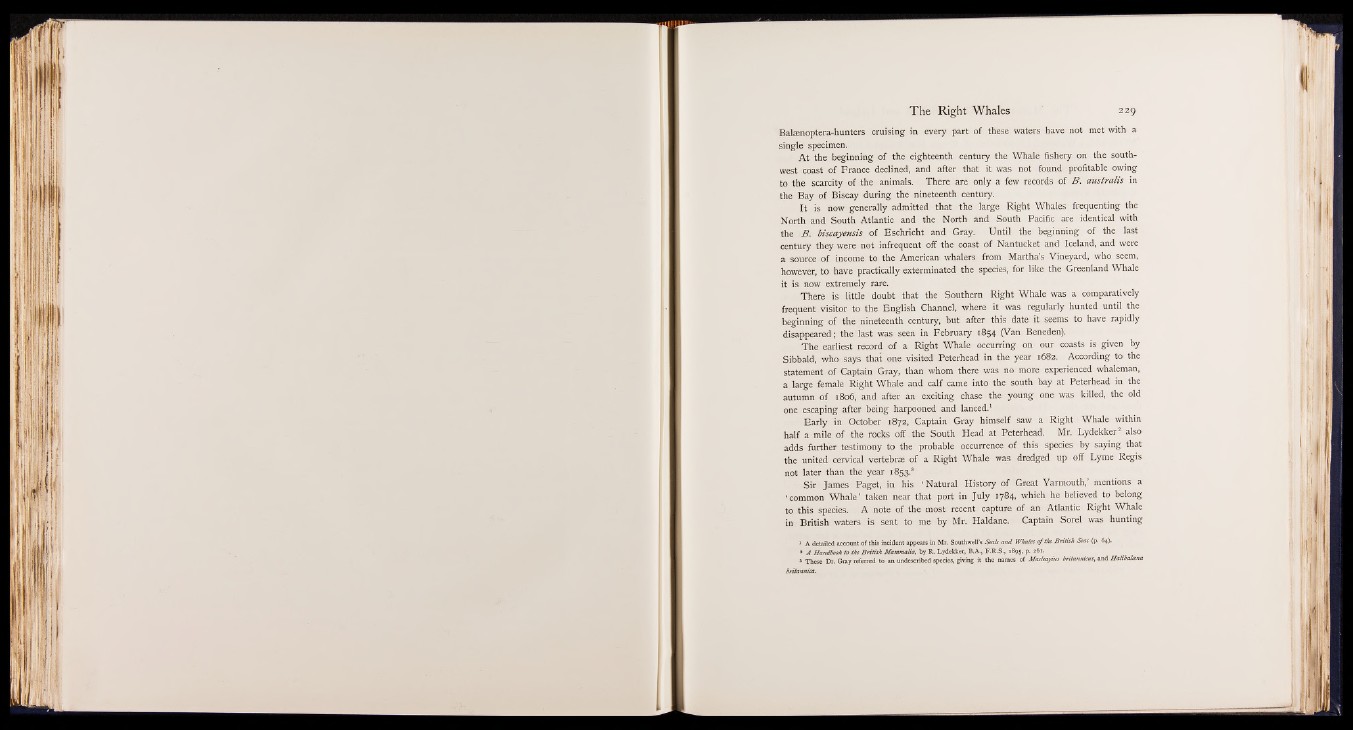
Balsenoptera-hunters cruising in every part of these waters have not met with a
single specimen.
At the beginning of the eighteenth century the Whale fishery on the southwest
coast of France declined, and after that it was not found profitable owing
to the scarcity of the animals. There are only a few records of B . australis in
the Bay of Biscay during the nineteenth century.
It is now generally admitted that the large Right Whales frequenting the
North and South Atlantic and the North and South Pacific are identical with
the B . Jnscayensis of Eschricht and Gray. Until the beginning of the last
century they were not infrequent off the coast of Nantucket and Iceland, and were
a source of income to the American whalers from Martha’s Vineyard, who seem,
however, to have practically exterminated the species, for like the Greenland Whale
it is now extremely rare.
There is little doubt that the Southern Right Whale was a comparatively
frequent visitor to the English Channel, where it was regularly hunted until the
beginning of the nineteenth century, but after this date it seems to have rapidly
disappeared; the last was seen in February 1854 (Van Beneden).
The earliest record of a Right Whale occurring on our coasts is given by
Sibbald, who says that one visited Peterhead in the year 1682. According to the
statement of Captain Gray, than whom there was no more experienced whaleman,
a large female Right Whale and calf came into the south bay at Peterhead in the
autumn of 1806, and after an exciting chase the young one was killed, the old
one escaping after being harpooned and lanced.1
Early in October 1872, Captain Gray himself saw a Right Whale within
half a mile of the rocks off the South Head at Peterhead. Mr. Lydekker1 2 3 * also
adds further testimony to the probable occurrence of this species by saying that
the united cervical vertebrae of a Right Whale was dredged up off Lyme Regis
not later than the year 1853.8
Sir James Paget, in his ‘ Natural History of Great Yarmouth, mentions a
‘ common Whale’ taken near that port in July 1784, which he believed t6 belong
to this species. A note of the most recent capture of an Atlantic Right Whale
in British waters is sent to me by Mr. Haldane. Captain Sorel was hunting
1 A detailed account of this incident appears in Mr. Southwell’s Seals and Whales o f the British Seas (p. 64).
2 A Handbook to the B ritish Mammalia, by R. Lydekker, B.A., F.R.S., 1895, p. 261.
3 These Dr. Gray referred to an undescribed species, giving it the names of Macleayius bntannicus, and Halibaltena
britannica.